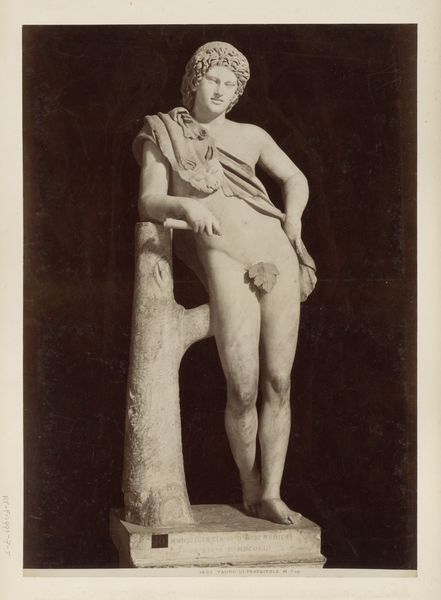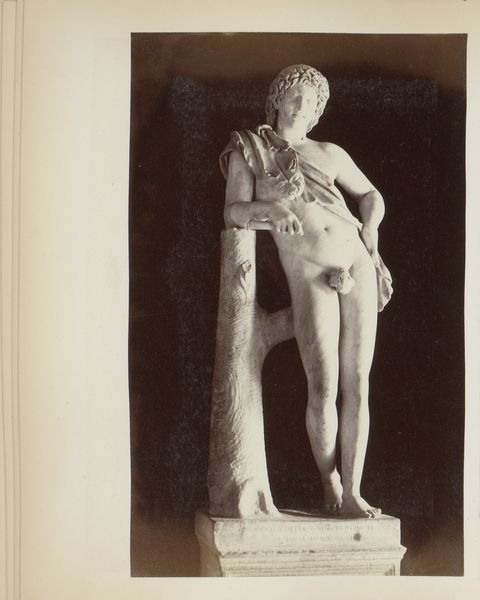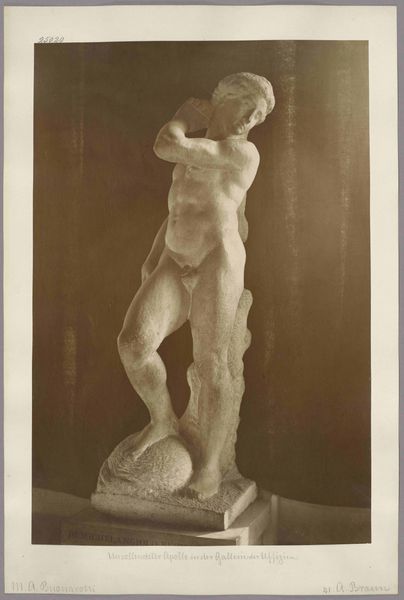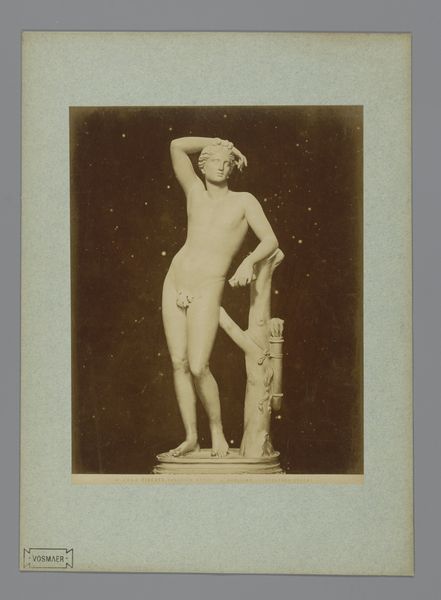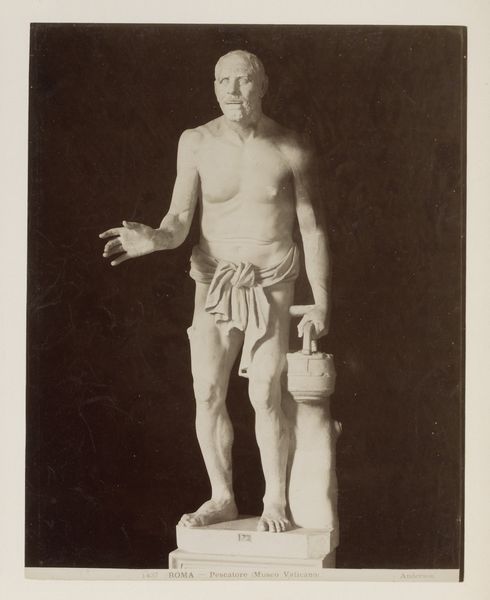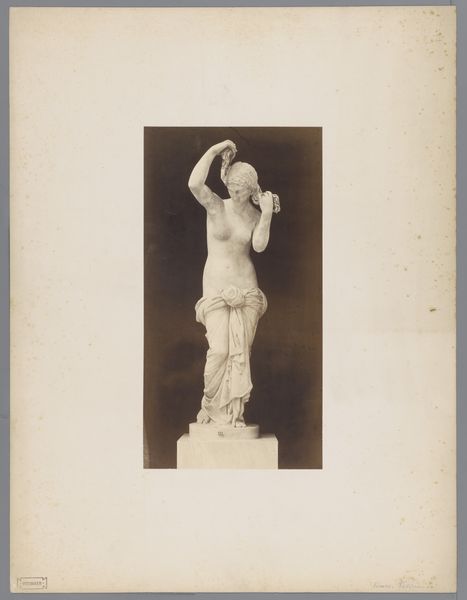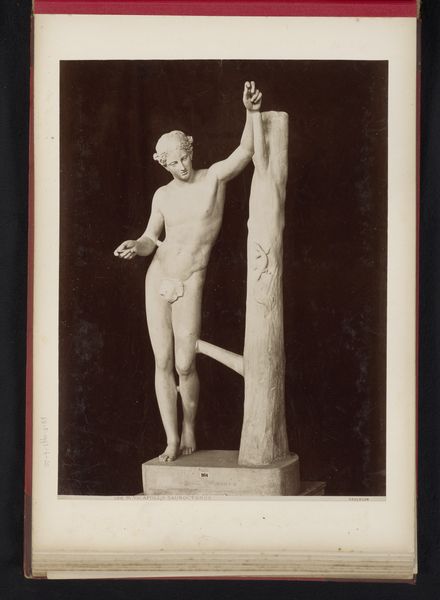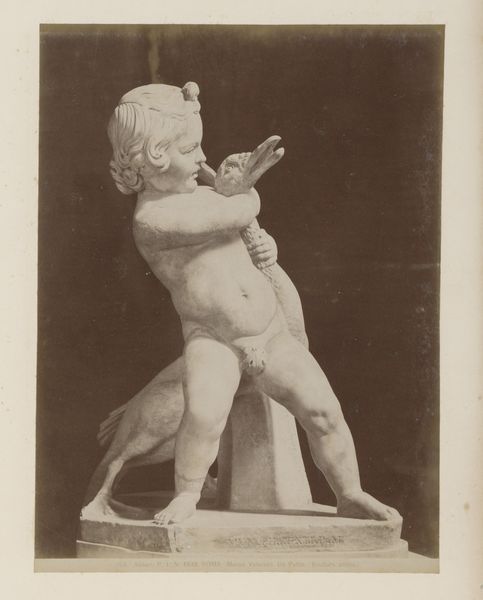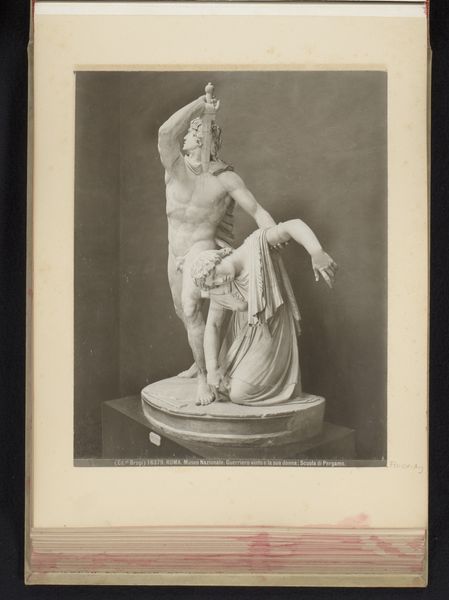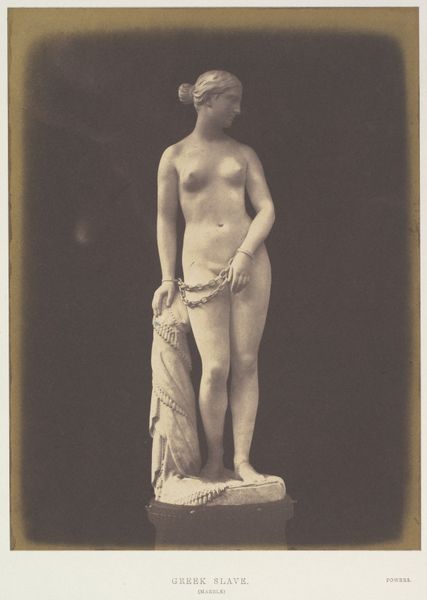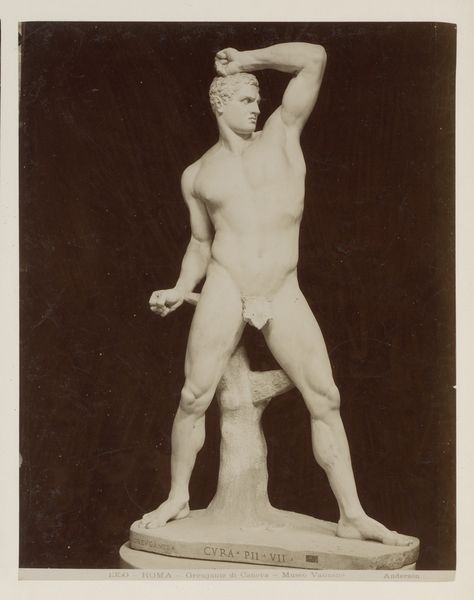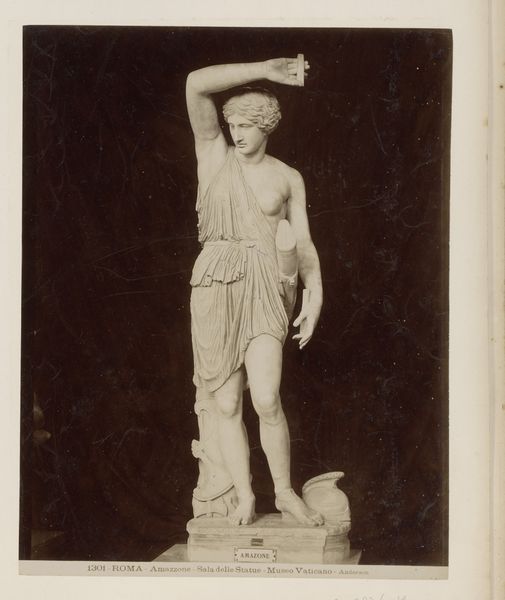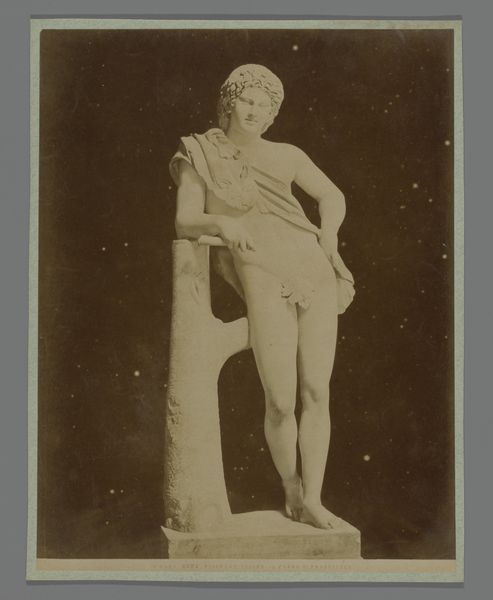
photography, sculpture
#
portrait
#
sculpture
#
classical-realism
#
figuration
#
photography
#
ancient-mediterranean
#
sculpture
#
nude
Dimensions: height 250 mm, width 196 mm
Copyright: Rijks Museum: Open Domain
Curator: Welcome. We're looking at a photograph from the Rijksmuseum collection, attributed to James Anderson and taken sometime between 1880 and 1920. It depicts a sculpture titled “Sculptuur van Ganymedes, Vaticaan,” or Sculpture of Ganymede, Vatican. Editor: Hmm. It’s gorgeous. Even in monochrome, the pose conveys a wistful languor, an almost melancholic beauty. He leans so casually, eternally suspended mid-pour. Makes me think of long afternoons and secrets whispered under the Roman sun. Curator: The image reflects a common 19th-century practice of documenting classical sculptures through photography, popularizing them across Europe and beyond. Note the specific details Anderson captures—the soft draping of the fabric, the smoothness of the skin, all enhanced by the photographic medium. Editor: True. It's more than just documentation; it's like Anderson is trying to breathe life back into the stone. I love how the light catches the curve of his shoulder, how delicately he holds that jug. Makes you wonder, what's he pouring? Nectar of the gods, or just…sadness? Curator: Ganymede was, of course, a Trojan prince abducted by Zeus to be his cupbearer, and in some interpretations, his lover. The sculpture itself thus engages themes of idealized beauty, servitude, and the complex power dynamics inherent in mythological narratives. The image, then, carries that loaded symbolism, even within a studio setting. Editor: Absolutely, the queerness too – visible in that downward glance, the slight tilt of his head, it is not hard to see how it fueled centuries of desire and yearning. He is simultaneously powerful and vulnerable, immortal and heartbreakingly human. That’s what pulls me in, the contradiction. Curator: Photography played a critical role in circulating these sculptures and shaping understandings of classical aesthetics, standardizing beauty while also opening discussions around sensuality and idealized forms. Editor: Seeing it framed through Anderson's lens adds another layer. It's not just the myth; it's the myth re-imagined, filtered through the eyes of another artist. The composition is so striking. The blank, shadowy backdrop isolates him. Curator: Thank you. Thinking about circulation of classical forms brings forth a larger conversation of power and authority associated with the era. It brings this Ganymede from antiquity right into our contemporary setting. Editor: Yes! So much here ripples out beyond its initial capture. Definitely worth a longer linger, lost in the ripple.
Comments
No comments
Be the first to comment and join the conversation on the ultimate creative platform.
